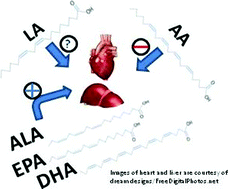The role of n − 6 and n − 3 polyunsaturated fatty acids in the manifestation of the metabolic syndrome in cardiovascular disease and non-alcoholic fatty liver disease
Abstract
Cardiovascular disease (CVD) and non-alcoholic fatty liver disease (NAFLD) are manifestations of the metabolic syndrome. CVD remains the number one cause of mortality in the West, while NAFLD is the most common liver disease. Growing evidence suggests that polyunsaturated fatty acids (PUFA) influence risk factors including circulating lipids and inflammation on the development of CVD and NAFLD. N − 6 and n − 3 PUFA are comprised of distinct family members, which are increasingly recognized for their individual effects. Therefore, this review examines what is currently known about the specific effects of the major n − 3 and n − 6 PUFA on CVD and NAFLD. Overall, this review supports a beneficial effect of n − 3 PUFA and highlights distinctive effects between alpha-linolenic acid found in plant oils relative to marine derived eicosapentaenoic acid and docosahexaenoic acid. This review also highlights contrasting health effects between the n − 6 PUFA, linoleic and arachidonic acid.


 Please wait while we load your content...
Please wait while we load your content...